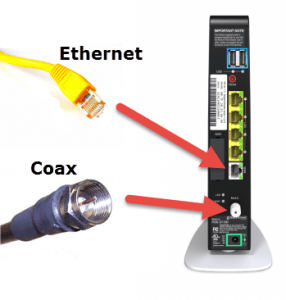Simple Fix
 Simple Fix: a reader asks…
Simple Fix: a reader asks…
What can I do when my computer stops working right? It seems like that happens all too often. I’m tired of having to call someone to fix it. It’s a fairly new Windows 10 PC by the way.
The simple and first fix anyone should try before calling for help is to restart your computer. I have solved many thousands of computer problems and that is all it takes for about 80% of the time. This has held true for over two decades, so much so that I came up with an “80/80/20/20” rule which goes something like this:
80% of the time you can fix your malfunctioning technology by restarting or re-powering the computer or device. Of the 20% that’s left, 80% of the time you can fix those problems by updating the software, firmware or driver. Of the 20% that’s left, well that’s now only 4% of all technology problems and that requires an expert’s help.
Let’s unpack this. The first thing to do is restart your computer. If the computer won’t shut down, then hold down the power button for 8 seconds, then release it. Now press it once and release it to start the computer back up. For other devices, you may need to remove the batteries, flip a power switch, or unplug it from electrical power. Then put in new batteries, turn the power switch back on, or plug it back into electric power.
 In the case of home networking devices, this re-powering action should happen from the outside in. Meaning: the cablemodem first, then the router, then any switches, then printers and other peripherals, and finally your computer. In the case of battery-powered devices, remove the batteries and replace them with fresh ones. For smartphones and tablets, turn them off (the exact procedure varies by type of smartphone or tablet) and then turn them back on again.
In the case of home networking devices, this re-powering action should happen from the outside in. Meaning: the cablemodem first, then the router, then any switches, then printers and other peripherals, and finally your computer. In the case of battery-powered devices, remove the batteries and replace them with fresh ones. For smartphones and tablets, turn them off (the exact procedure varies by type of smartphone or tablet) and then turn them back on again.
In addition to unplugging the electrical power, some routers may benefit from having the coax cable unplugged for 30 seconds or so. That’s another thing that your cable company will probably have you do before they send a service person out.
It’s become a cliche that tech support people always instruct users to do this restart procedure first. Some companies even go so far as to put signs up that say “In case of computer problems, restart your computer before calling for tech support”. But even though this seems so obvious to some, for many folks computers and consumer technology is a complete mystery.
The second thing to try (if the first thing didn’t do the trick) is to update everything. In the case of malfunctioning Windows computers, run Windows Update and install any updates that are offered. Also look in the Help > Updates menu for all your installed software to get the latest updates. In the case of alternate web browsers like Google Chrome and Mozilla Firefox, click Help > About… which is how those two programs manually check for and install updates. If a particular piece of software is not working right for you and causing the whole computer to malfunction, then you might have to take it one step further: uninstall the software and then re-install it. For Microsoft Office, you can go to the uninstall menu (Start > Settings > Apps) and click on the Office entry, then click the Repair Office button. Finally, some old software just isn’t designed to work on modern operating systems, and you might have to upgrade to a new version.
 A note about that: these days using old software is a huge security risk. You might think you’re saving money or don’t want the new features, but upgraded software always has security improvements. Neglecting to keep your software upgraded to the current version is often a way for hackers to take over your computer, infecting you and attacking everyone your computer knows about as well.
A note about that: these days using old software is a huge security risk. You might think you’re saving money or don’t want the new features, but upgraded software always has security improvements. Neglecting to keep your software upgraded to the current version is often a way for hackers to take over your computer, infecting you and attacking everyone your computer knows about as well.
Once you’ve tried those two things and assuming nothing worked for you, now you can call on someone for help. Chances are they will repeat all the above just to make sure. After all, they can’t know how computer savvy you are, and if you even know how to restart your own computer, update your own software, or where the batteries go. But by taking the above two steps first, you’ve ensured that you’re not wasting your own money (or your company’s) by calling for tech support when you can easily and quickly fix the problem yourself.
This website runs on a patronage model. If you find my answers of value, please consider supporting me by sending any dollar amount via:
or by mailing a check/cash to PosiTek.net LLC 1934 Old Gallows Road, Suite 350, Tysons Corner VA 22182. I am not a non-profit, but your support helps me to continue delivering advice and consumer technology support to the public. Thanks!








Pingback: Overloaded iMac - Practical Help for Your Digital Life®